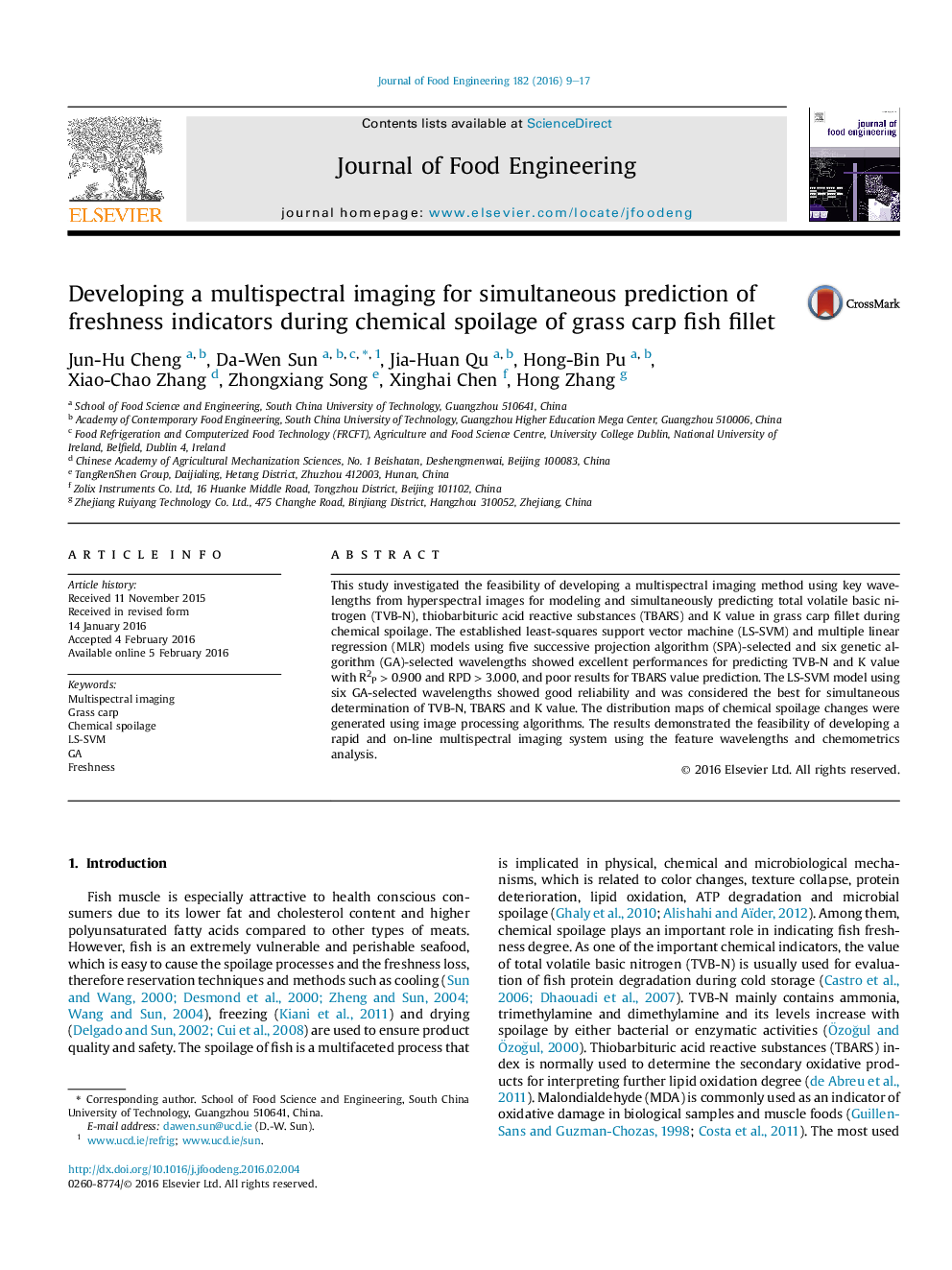| Article ID | Journal | Published Year | Pages | File Type |
|---|---|---|---|---|
| 222646 | Journal of Food Engineering | 2016 | 9 Pages |
•The spectral information was extracted from hyperspectral images in fish fillet.•Five and six key wavelengths were selected using SPA and GA.•LS-SVM and MLR models showed good performances for predicting TVB-N and K value.•The established models failed to predict the TBARS value.•The distribution maps of chemical spoilage were generated.
This study investigated the feasibility of developing a multispectral imaging method using key wavelengths from hyperspectral images for modeling and simultaneously predicting total volatile basic nitrogen (TVB-N), thiobarbituric acid reactive substances (TBARS) and K value in grass carp fillet during chemical spoilage. The established least-squares support vector machine (LS-SVM) and multiple linear regression (MLR) models using five successive projection algorithm (SPA)-selected and six genetic algorithm (GA)-selected wavelengths showed excellent performances for predicting TVB-N and K value with R2P > 0.900 and RPD > 3.000, and poor results for TBARS value prediction. The LS-SVM model using six GA-selected wavelengths showed good reliability and was considered the best for simultaneous determination of TVB-N, TBARS and K value. The distribution maps of chemical spoilage changes were generated using image processing algorithms. The results demonstrated the feasibility of developing a rapid and on-line multispectral imaging system using the feature wavelengths and chemometrics analysis.
